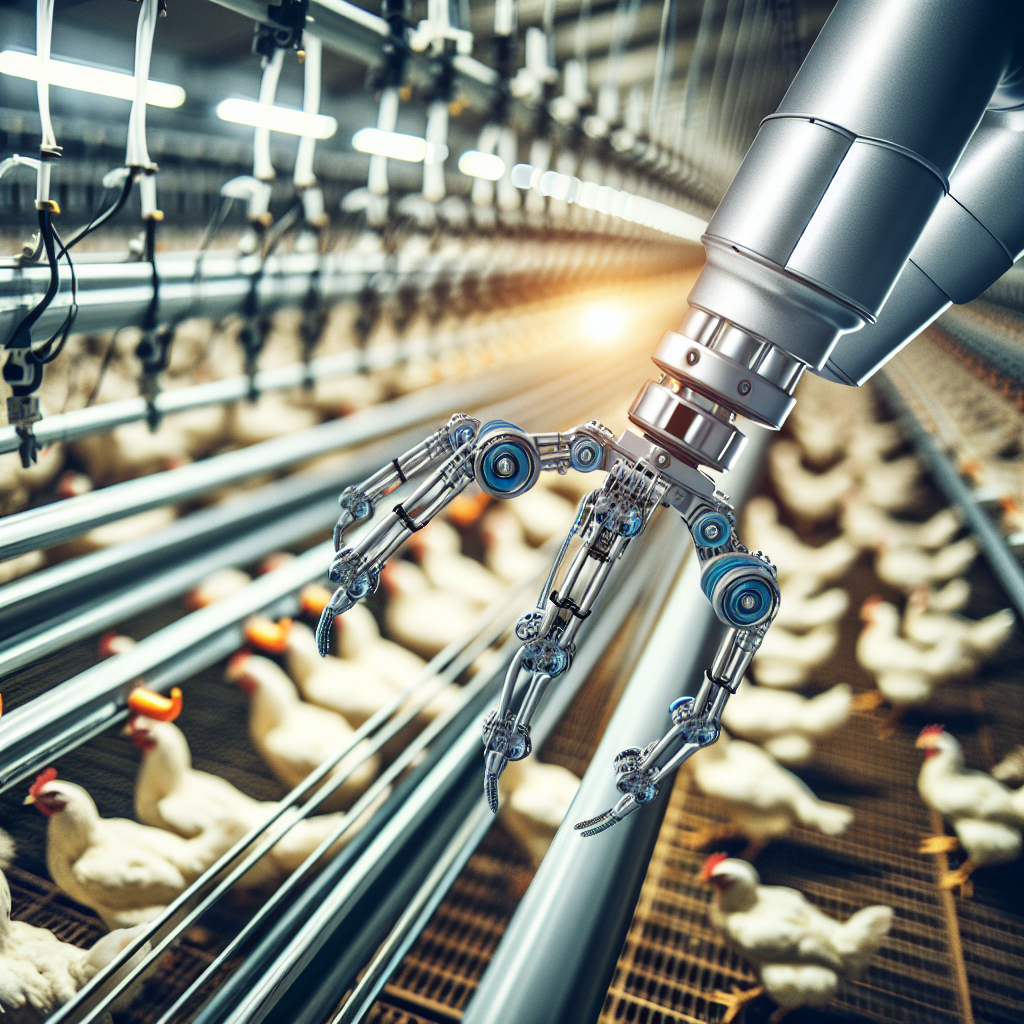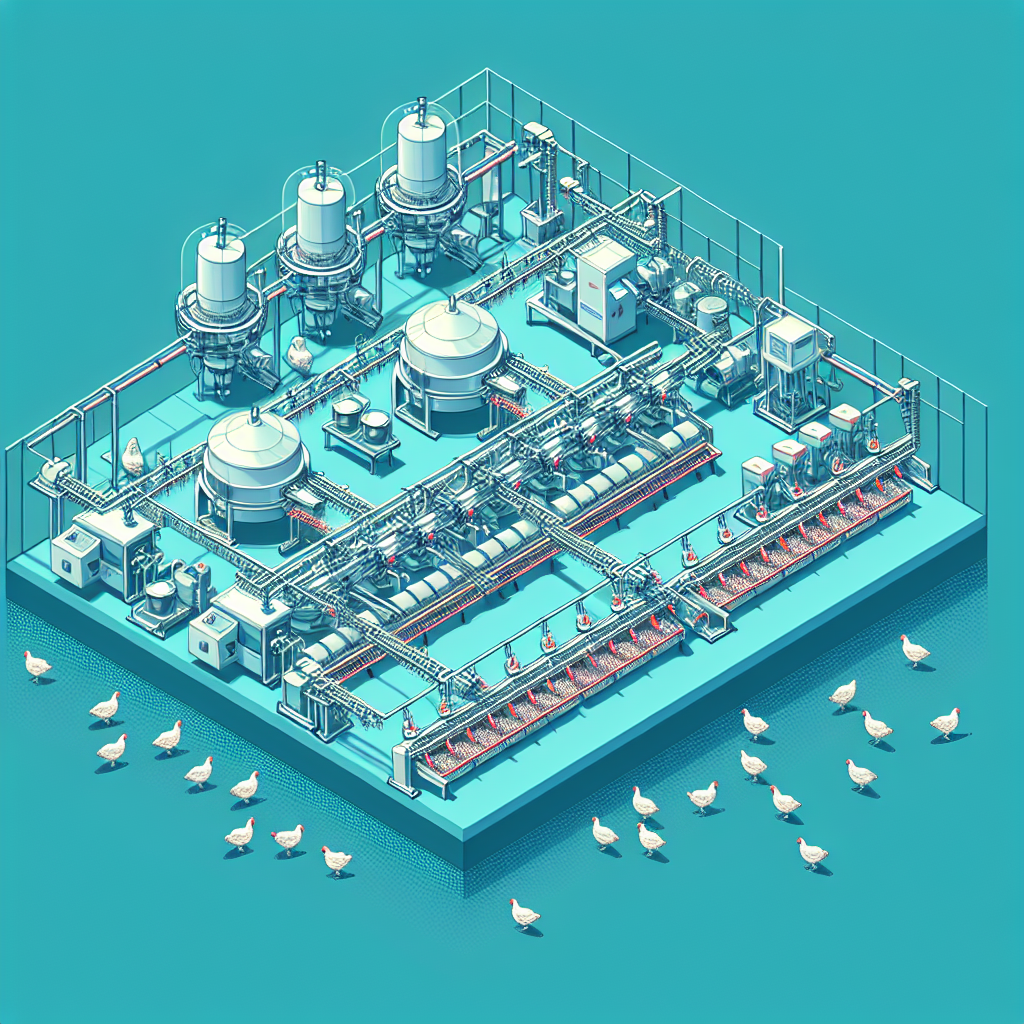Are you constantly worried about the safety of your beloved flock? Wondering if tech-based predator deterrents are worth the investment? Look no further! In this article, we’ll explore the effectiveness of these innovative solutions in safeguarding your flock from potential threats. With the advancements in technology, these predator deterrents provide a promising option for ensuring the well-being and security of your feathered friends. So, let’s dive in and discover how these high-tech gadgets can become your flock’s newest line of defense.
I. Understanding tech-based predator deterrents
A. Definition of tech-based predator deterrents
Tech-based predator deterrents refer to the use of technology-driven devices and systems designed to discourage or prevent predators from targeting and harming a flock of animals. These deterrents leverage various technologies, such as sensors, alarms, lights, sounds, and even advanced AI algorithms, to proactively detect and repel potential threats.
B. Types of tech-based predator deterrents
There are several types of tech-based predator deterrents available in the market. Some common examples include electric fences, motion-activated lights and sirens, predator-detection cameras, and automated scare devices such as noise emitters, water sprayers, or flashing lights. Each type of deterrent operates based on different principles to disrupt the predators’ hunting behaviors effectively.
C. Benefits of using tech-based predator deterrents
Tech-based predator deterrents offer several benefits for flock owners. Firstly, they provide an additional layer of protection beyond traditional methods, such as fences or guard animals. Secondly, these deterrents can help deter predators without causing harm or stress to the protected animals. Additionally, tech-based solutions can be customizable and adaptable to different environments and species, making them suitable for a wide range of flock types. Lastly, these deterrents can provide peace of mind for flock owners, knowing that their animals are safer and more secure.
II. Examining the effectiveness of tech-based predator deterrents
A. Case studies on the effectiveness of tech-based predator deterrents
Numerous case studies have been conducted to evaluate the effectiveness of tech-based predator deterrents. These studies have shown promising results, with a significant reduction in predator attacks reported when these deterrents are properly implemented. For example, a study conducted on poultry farms demonstrated that the use of motion-activated lights and sirens reduced the number of predator attacks by 70%.
B. Factors that affect the effectiveness of tech-based predator deterrents
Several factors can influence the effectiveness of tech-based predator deterrents. These include the type of deterrent used, the species of predators present in the area, the size and layout of the flock’s enclosure, and the level of maintenance and monitoring. Understanding these factors and tailoring the deterrents to specific needs can enhance their effectiveness in deterring predators.
C. Limitations of tech-based predator deterrents
While tech-based predator deterrents have proven to be effective, they do have limitations. In some cases, predators may become habituated to certain deterrents over time, reducing their effectiveness. Additionally, extreme weather conditions, such as heavy rain or snow, can impact the functionality of some devices. Furthermore, false alarms triggered by wildlife or environmental factors can occur, which might desensitize predators to the deterrents. It is important to consider these limitations when selecting and implementing tech-based predator deterrents.
III. Selecting the right tech-based predator deterrents for your flock
A. Assessing your flock’s specific needs and vulnerabilities
Before choosing tech-based predator deterrents, it is crucial to evaluate your flock’s unique needs and vulnerabilities. Factors to consider include the species and size of your flock, their behavior patterns, and any previous incidents of predator attacks. This assessment will help determine the types of deterrents required and their suitable specifications.
B. Considering the predator species in your area
Understanding the predator species in your area is essential for effective deterrence. Different predators may respond differently to various deterrent methods. For instance, visual deterrents such as lights and reflective surfaces might be more effective against nocturnal predators, while audible deterrents like sirens or ultrasound devices can be effective against both diurnal and nocturnal predators. Tailoring the deterrents to the specific predators will maximize their effectiveness.
C. Reviewing the available options and their features
Once you have a good understanding of your flock’s needs and the predator species in your area, it is time to research and review the available options. Look for deterrents that align with your specific requirements and have features that address your flock’s vulnerabilities. Consider factors such as range, durability, ease of use, and compatibility with your existing infrastructure.
D. Consulting experts and other flock owners
Seeking advice from experts in the field or consulting with other experienced flock owners can provide valuable insights into selecting the right tech-based predator deterrents. They can share their firsthand experiences, offer recommendations, and help you avoid potential pitfalls. Their expertise and knowledge can help you make an informed decision.
E. Cost analysis and long-term investment
When considering tech-based predator deterrents, it is important to evaluate the costs and long-term investment. Compare the prices of different deterrence options and weigh them against their effectiveness and durability. Additionally, consider the potential savings in terms of reduced livestock losses and associated veterinary costs. It might be worth investing in higher-priced but more reliable and effective deterrents for long-term protection and peace of mind.
IV. Implementing tech-based predator deterrents effectively
A. Proper installation and maintenance
To ensure the effectiveness of tech-based predator deterrents, proper installation and regular maintenance are crucial. Follow the manufacturer’s instructions carefully during installation to optimize the deterrent’s performance. Regularly inspect and test the deterrents to ensure they are functioning correctly and replace any faulty components promptly. Routine maintenance helps maintain the deterrents’ reliability and extends their lifespan.
B. Regular monitoring and analysis
Continuous monitoring and analysis of the predator deterrent system’s performance is essential. Regularly check for any signs of damage or tampering, as well as false alarms or missed detections. Analyze the data collected from the deterrents to gain insights into predator activity patterns and identify any necessary adjustments or improvements. By closely monitoring the system, you can promptly address any issues and fine-tune its effectiveness.
C. Integrating tech-based deterrents with other protective measures
While tech-based predator deterrents can provide an effective layer of protection, they should not be relied upon as the sole defense mechanism. It is crucial to integrate these deterrents with other protective measures, such as physical barriers like fences, secure enclosures, or guard animals. The combination of tech-based deterrents and traditional methods can create a robust defense system against predators, increasing the overall effectiveness and safety for your flock.
V. Addressing common concerns and misconceptions
A. Environmental impact of tech-based predator deterrents
One concern often raised is the potential environmental impact of tech-based predator deterrents. When selecting deterrents, opt for those that have been designed to minimize harm to the environment and non-target wildlife. Additionally, positioning the deterrents strategically and using them only when necessary can help minimize their impact on the surrounding ecosystem.
B. Impact on non-target wildlife
Another concern is the potential impact of these deterrents on non-target wildlife. Proper selection and placement of deterrents can help minimize the impact on innocent animals. Advances in technology have enabled the development of deterrents that specifically target and repel predators without affecting other species. Ensure that the deterrents you choose are designed to be species-specific and have minimal impact on non-target wildlife.
C. Possible drawbacks of relying solely on tech-based deterrents
While tech-based predator deterrents are effective, relying solely on them may have drawbacks. Predators are intelligent and adaptable creatures that may find ways to overcome or bypass these deterrents, especially if used predictably. Consequently, a comprehensive approach that combines tech-based deterrents with other protective measures is recommended to maintain a high level of security and protection for your flock.
VI. Assessing the overall protection provided by tech-based predator deterrents
A. Measuring the reduction in predator attacks
The effectiveness of tech-based predator deterrents can be evaluated by measuring the reduction in predator attacks. By comparing the occurrence of attacks before and after the implementation of deterrents, you can assess the deterrents’ impact on the overall safety of your flock. Keep detailed records and track any changes in predator activity to gauge the effectiveness of the deterrents.
B. Evaluating the impact on flock health and behavior
Alongside measuring predator attacks, it is important to evaluate the impact of tech-based predator deterrents on the health and behavior of your flock. Take note of any changes in flock behavior, stress levels, or signs of discomfort. Regular health check-ups can also help determine if the deterrents have caused any adverse effects on your animals. A well-implemented deterrent system should not significantly impact the well-being of your flock.
C. Considering the peace of mind for flock owners
An often-overlooked aspect when assessing the effectiveness of tech-based predator deterrents is the peace of mind they provide to flock owners. Knowing that your animals are protected by advanced technology can alleviate stress and anxiety, enabling you to focus on other aspects of flock management. The sense of security and peace of mind is an invaluable benefit that should not be underestimated.
VII. Real-life experiences and testimonials
A. Interviews with flock owners using tech-based predator deterrents
To gain insight into the real-life effectiveness of tech-based predator deterrents, interviews with flock owners who have implemented these systems are invaluable. Hearing firsthand experiences from those who have successfully protected their flocks using these deterrents can provide practical advice, tips, and feedback on the effectiveness of different technologies and approaches.
B. Success stories in protecting flocks with tech-based deterrents
Success stories of flock owners who have effectively protected their flocks using tech-based predator deterrents can serve as inspiring examples. These stories highlight the positive outcomes and demonstrate the potential of these deterrents in safeguarding livestock. Sharing success stories can motivate other flock owners to explore tech-based predator deterrents as a viable option for protecting their own flocks.
VIII. Future advancements in tech-based predator deterrents
A. Emerging technologies in predator deterrence
The future of tech-based predator deterrents holds great promise, with emerging technologies continuously pushing the boundaries of innovation. Some areas of advancement include the use of advanced AI algorithms to enhance detection accuracy, the integration of drone surveillance for real-time monitoring, and the development of more sophisticated and effective deterrent devices.
B. Potential improvements and innovations
As technology evolves, there is room for continuous improvement and innovation in tech-based predator deterrents. Potential advancements might include the development of solar-powered deterrents for increased sustainability, the incorporation of remote access and control features for easier management, and the integration of multiple deterrent methods into a single, comprehensive system.
C. Implications for the future of flock protection
The future of flock protection looks promising, with tech-based predator deterrents playing an increasingly vital role. As these deterrents become more advanced and sophisticated, they can significantly enhance flock safety and minimize losses due to predator attacks. Continued research and development in this field will contribute to the ongoing improvement of flock protection measures and the overall well-being of livestock.
IX. Conclusion
A. Summary of the effectiveness of tech-based predator deterrents
Tech-based predator deterrents have proven to be effective in protecting flocks from predator attacks. Case studies have shown a significant reduction in attacks when deterrents are properly implemented, and flock owners have reported positive outcomes. However, it is important to consider factors such as specific flock needs, predator species in the area, and ongoing maintenance to maximize the effectiveness of these deterrents.
B. Considerations for flock owners in implementing deterrents
When implementing tech-based predator deterrents, flock owners should assess their flock’s vulnerabilities, research available options, consider expert advice, and integrate deterrents with other protective measures. It is crucial to strike a balance between cost, effectiveness, and long-term investment to ensure the safety and security of the flock.
C. Importance of ongoing research and development
Research and development in tech-based predator deterrents are vital for future advancements and improvements. Continued efforts in this field will lead to more effective deterrents, better integration with existing systems, and reduced environmental impact. Ongoing research is necessary to stay ahead of the ever-changing landscape of predator-prey dynamics and protect flocks effectively.




